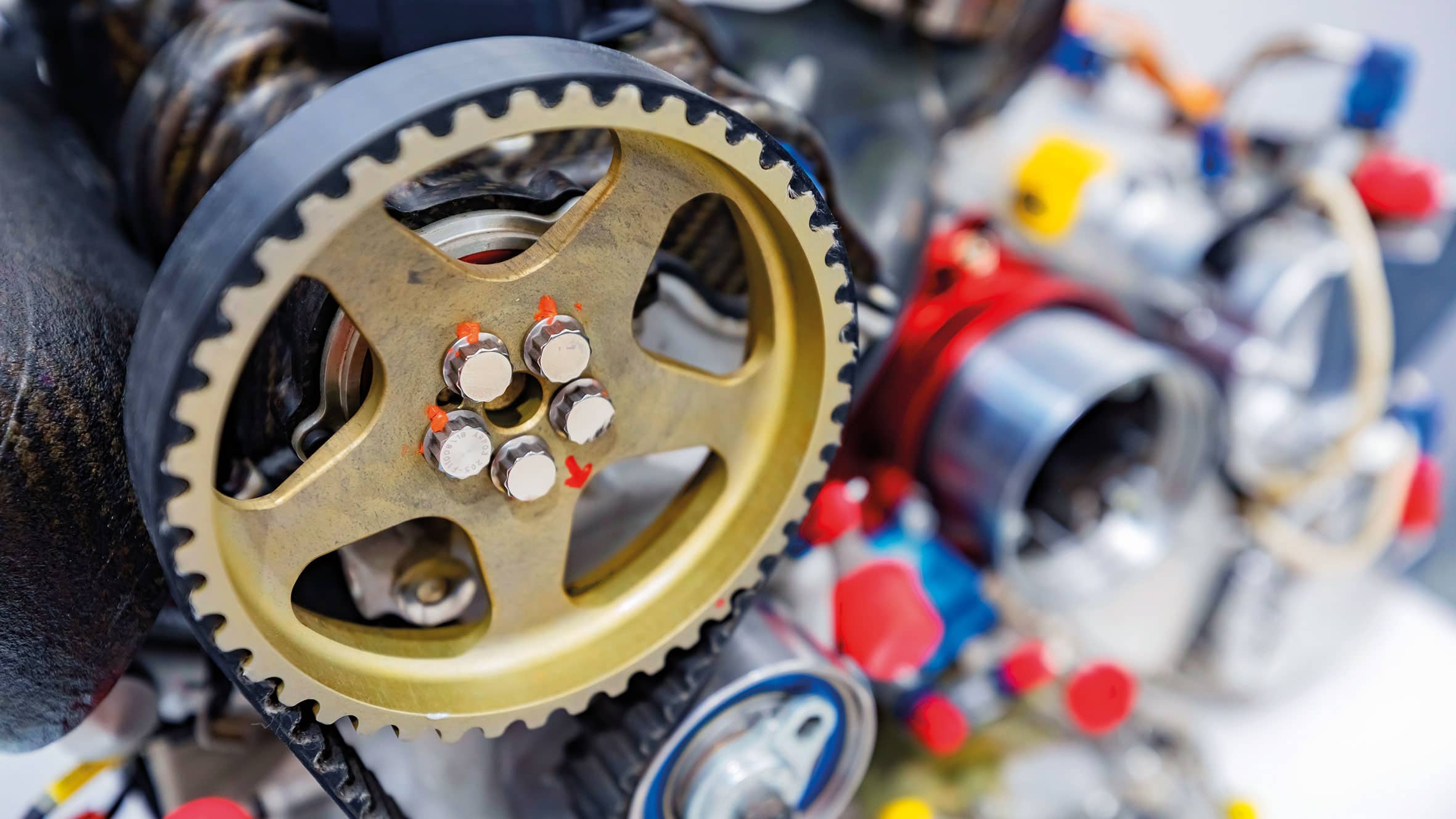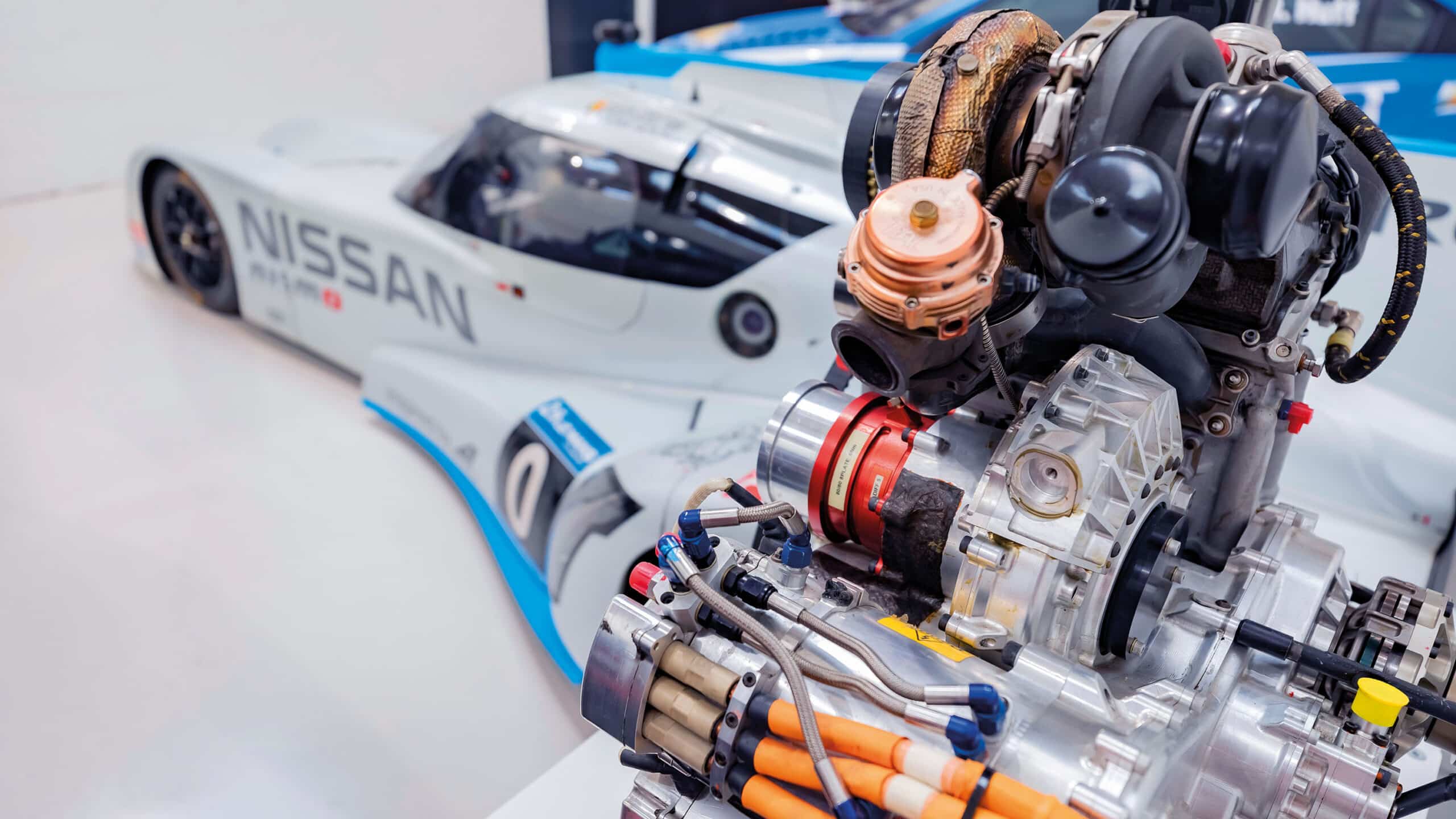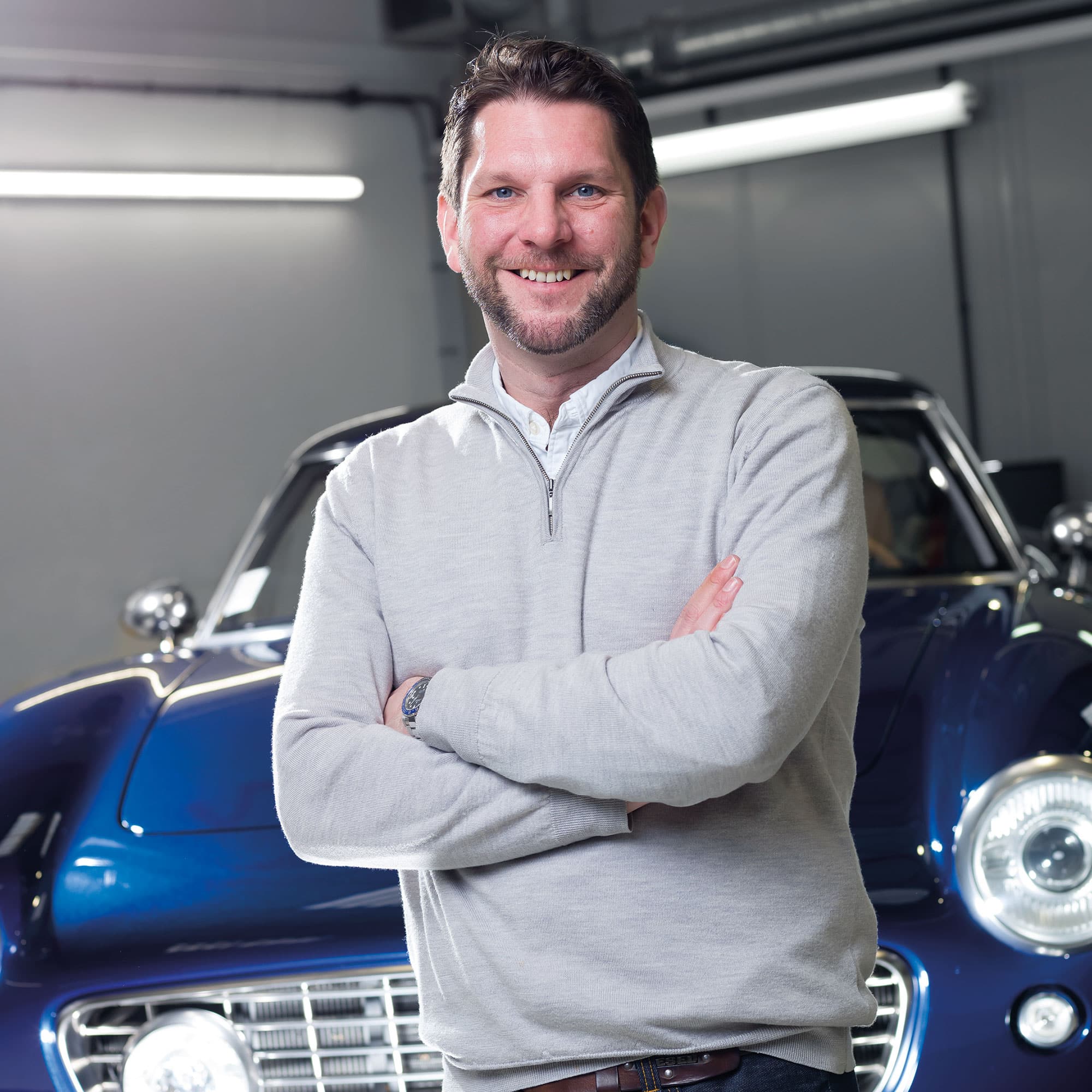RML: Racing under the radar
Mallock is one of Britain’s foremost racing families. They just don’t like to talk about it… until now. Damien Smith paid a visit to RML’s headquarters to find out more about an understated powerhouse
Jonathan Bushell
He’s a proud dad, Ray Mallock. Just don’t expect him to make a song and dance about it. At 72, the racer turned team owner and preparation specialist has fully earned the right to step back and enjoy his status as one of UK motor sport’s most respected elder statesmen. Since 2016, the baton to steer the family firm has passed into the assured hands of son Michael, who is leading Ray Mallock Ltd – better known as RML – into rich and increasingly diverse new avenues. That has allowed Ray to return (with obvious glee) to his roots as a racing driver, most notably in a classic front-engined 1960 Formula Junior built by his late father. Major Arthur Mallock wasn’t one to blow his own trumpet either. It’s just not the family way.
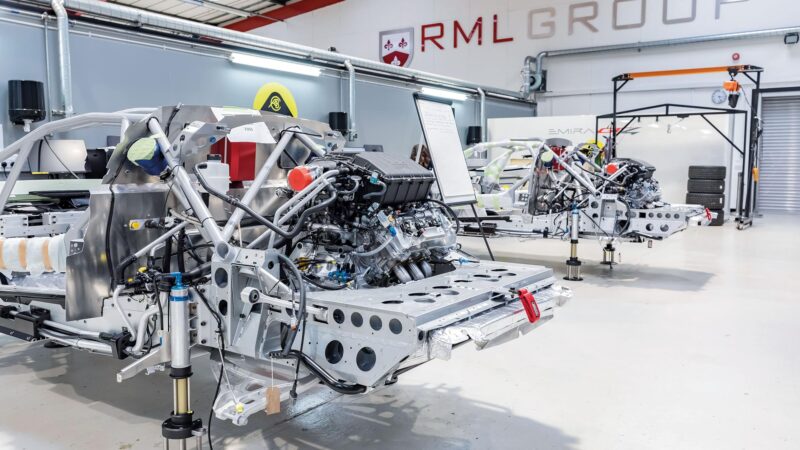
Jonathan Bushell

Jonathan Bushell
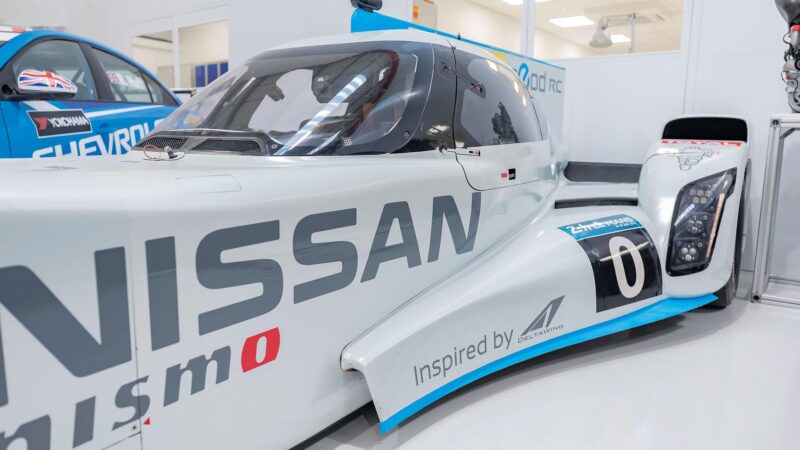
Jonathan Bushell
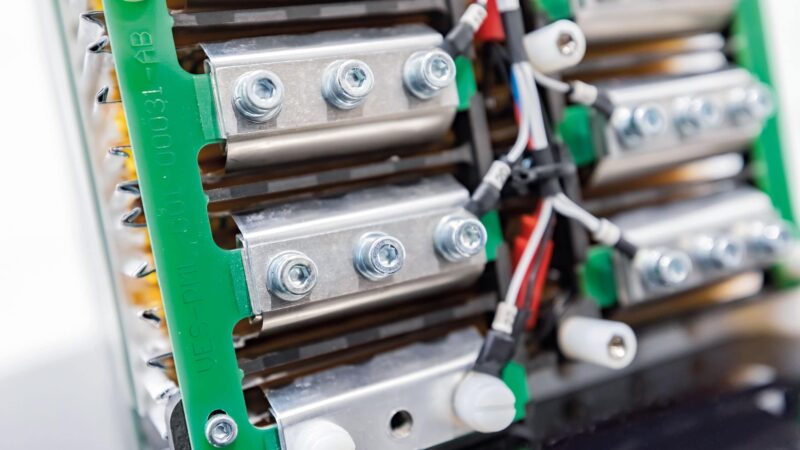
Jonathan Bushell
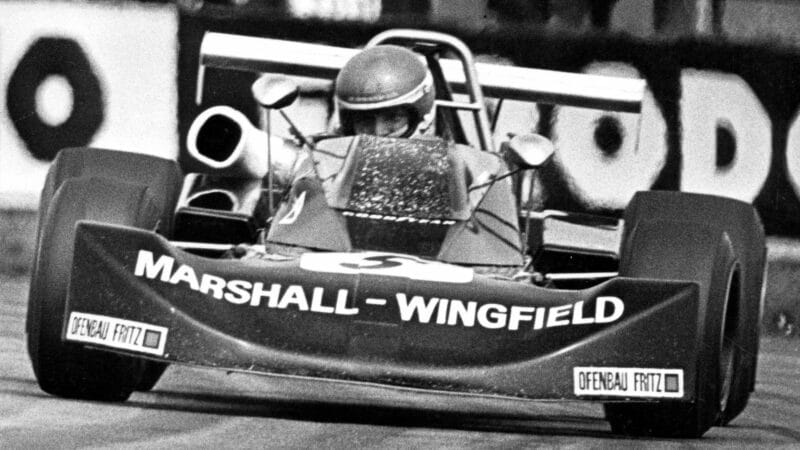
Has that natural tendency towards modesty held Mallock back? Major Arthur pre-dated Colin Chapman and Jack Brabham as a pioneer of making light, strong, beautifully engineered racing cars his loyal and committed customers could believe in. Yet his company never expanded far beyond the grassroots and its signature U2 and Clubmans racers that remain a beloved staple of the UK national scene today. Ray too might have gone further than skimming the edges of Formula 1 in his own racing life, had he developed a hustling sales patter to match his obvious ability. But you can’t be what you’re not. Just get on with it, without fuss. That’s a fitting Mallock motto.
“We had been put on the back foot with inaccurate stories about the future of RML”
“We’ve always been pretty modest about our stuff and I take my hat off to people like David Richards, who really promote their brand,” shrugs Ray. “We haven’t done that in this family. We’ve just got on, below the radar.”
But that might finally be about to change. On first contact it’s clear third-generation Michael Mallock is a chip off the old, familiar block as a full-blooded racer. But there’s also a clear sense of ambition and an understanding of the value in telling the world more about what RML does that sets him apart. Which is why Motor Sport has travelled to the company’s bustling HQ on the outskirts of Wellingborough, Northants to explore this strangely understated engineering powerhouse.
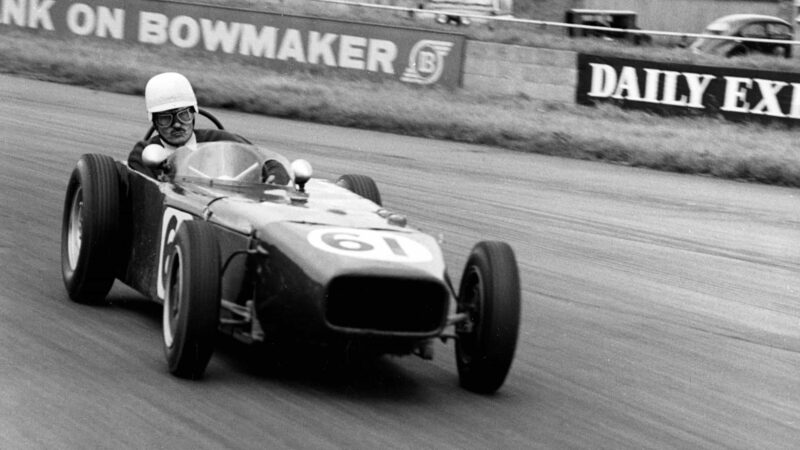
Major Arthur Mallock in action in one of his own U2s at Silverstone in 1961
Motoring picture library
“When it was time for me to step back, Michael could see the potential in the business, of going into different markets, and it’s been absolutely the right thing to do,” says Ray. “It’s enabled the skills, experience and supply chain to be utilised in different markets in a much more sustainable way. It’s definitely a proud dad situation, seeing what I’ve created taken in good hands into different arenas.”
Beside him, Michael smiles at what is probably the closest he’ll get to hearing a big paternal expression of approval. “It was 12 years ago when I came back into the business,” says Michael, 40. “I did an apprenticeship when I was 16, left school and went around every department, repaired my Mallock Mk18 when I stuck it in the wall at Clearways – all that kind of good stuff. I was in the fab shop, drove the van, worked in the electrical department and then went off to race myself. When I came back the Nissan Juke R was my first project.” It was RML that took the Japanese manufacturer’s cute baby crossover and added a 485bhp twin-turbo 3.8-litre V6 and four-wheel-drive GT-R powertrain to create something not quite so well suited to supermarket runs. “I led that project and then looked at ways that we could carry on doing that type of thing – as Ray says, using that motor sport knowledge, skill base and ‘get it done right, get it done quickly’ mentality.”
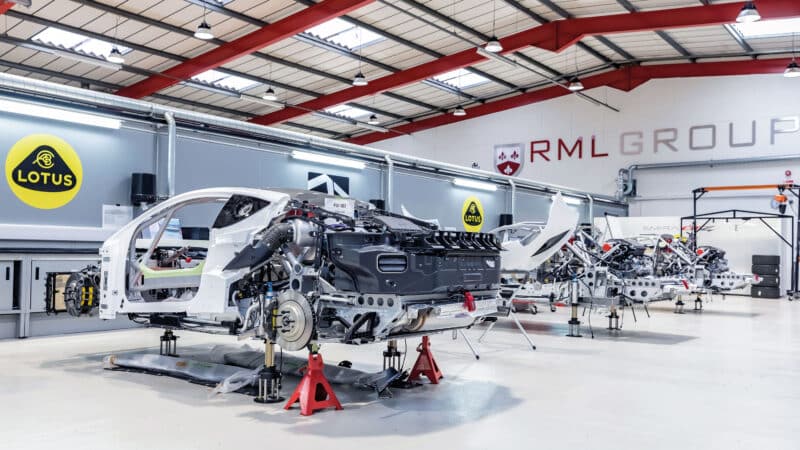
Lotus GT4 offerings being made ready.
Jonathan Bushell
Ray built the RML Group on the back of a series of racing successes and periods of domination, notably in the British and World Touring Car Championships with Vauxhall and Nissan in the former and Chevrolet in the latter. But that traditional model of relying on fickle car manufacturers to keep the faith for another season is a dicey way to run a serious business. “For the past couple of years only about 10 to 15% of revenue has been from motor sport,” says Michael. “The majority is from the high-performance automotive sector: continuation cars for OEMs and defence work, where we’ve utilised our knowledge on powertrains for military projects.”
Before we go further, he addresses recent alarm that RML has allegedly run on to the rocks. It hasn’t been an easy time, Michael admits, but he has positive news. “We had been put on the back foot with wholly inaccurate stories about the future of RML, stemming from a couple of our major clients who had defaulted on payments,” he says. “We have now secured a level of private investment that has not only put us back on track, but also given RML the chance to restructure its operations into three defined areas: RML Advanced Engineering, which will handle ongoing engineering work for a variety of automotive clients; RML New Energy (a working title), that will deal with our advanced work around battery technology; and Mallock Automotive, which will handle coachbuilt products, like the Short Wheelbase, and related future projects. In short, this episode has actually given us the opportunity to create a more efficient operation.”
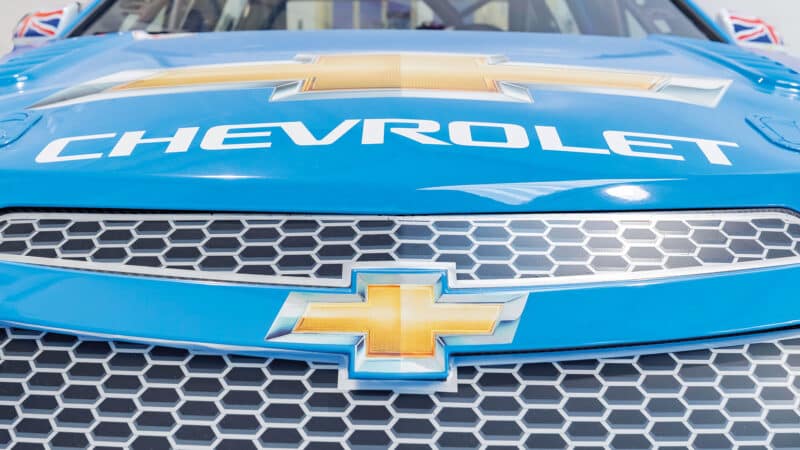
Chevrolet was one of RML’s major race programmes, fielding cars in the BTCC and WTCC.
Jonathan Bushell
So let’s get into what RML specialises in – some of which he can’t talk about! “Some of the work we do for OEMs, particularly on development of new products, are what will be mainstream in 10 years’ time,” he says. “It’s interesting to see stuff that we did eight years ago now on some road cars. We played just a small part in that gestation.” Electrification is a particularly fruitful avenue to explore. “We’re doing a fully homologated battery for Czinger,” says Michael. “Their facility in Torrance, Los Angeles is next door to Singer Porsche, a nightmare for the postman!”
But the ‘halo’ project closest to Michael’s heart, and the one that for a change goes out under the company’s own name, is the Short Wheelbase – an exotic homage, or reimagining, of Ferrari’s 250 GT SWB. Andrew Frankel gave the car a glowing review in these pages earlier this year and, on the back of its previous work producing Aston Martin’s DB5 continuation cars, it’s a rich seam RML can clearly mine effectively. But it could have been something else entirely. “We were going to do a hypercar,” reveals Michael. “I wanted to diversify from relying on external customers to showcase our capability, and have a ‘vanity legacy product’ for the Mallock family and RML. We got a fair way down the line with the design scheme and it’s still sat there for the future. In keeping with Mallock history, it is front-engined, 1000hp with an in-house designed twin-turbo V8, a seven-speed manual gearbox with paddles and a decent amount of downforce. I’d raised about two-thirds of what we needed to do it – but then realised I didn’t really want to have a hypercar. These days you can drive a BMW 3 Series at 90mph down a B-road and it doesn’t feel fast. I wanted something that you could have fun in to celebrate the joy of driving. So we moved towards a heritage product. It takes elements from a lot of different cars from that period and celebrates the 250 GT SWB, which is one of my favourite cars, but it’s our version of how it would look if it was done using modern technologies.”
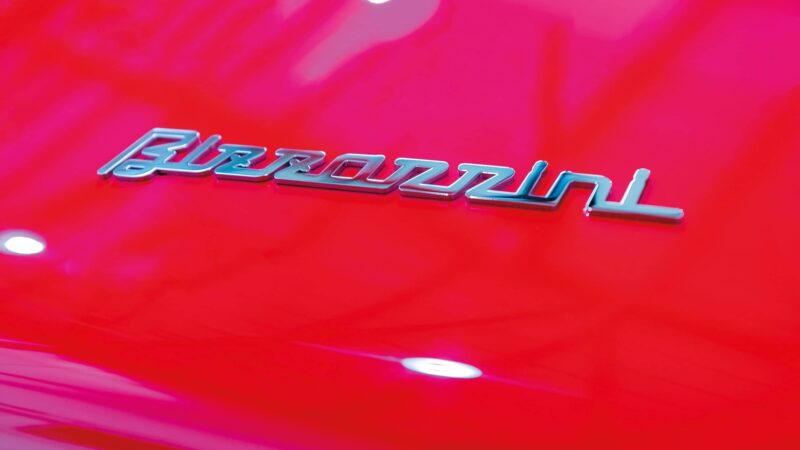
Bizzarrini is back
Jonathan Bushell
What about the F-word? Ferrari is famously (and quite rightly) protective of its historical IP. When I first saw the SWB, I imagined an implosion of fury somewhere in Maranello. But, says Michael, there has been zero contact with Ferrari, from beginning to end. “If we had tried to make a replica, that would be entirely inappropriate. What we have done and what the vehicle does is celebrate not specifically that car, but that style. It is entirely newly surfaced. In the heritage area yesterday there was a clay model that we use for the full-size sign-off. There’s not a panel that is the same in any way [to a Ferrari]. The brief was, if we were designing that type of car now how would we design it? Actually, it was amazing the amount of changes we made in the full-size clay. In digital it had looked absolutely brilliant. But when I saw the clay I nearly stopped the programme. It was awful, just so wrong! I think we ended up taking about 3in out of the rear haunches. The nose height I moved by about 2in. Massive change, but a really fun process, that artisanal skill of working on a clay model to get it as it should be. We were there until midnight with cold pizza and cups of coffee getting it changed.”
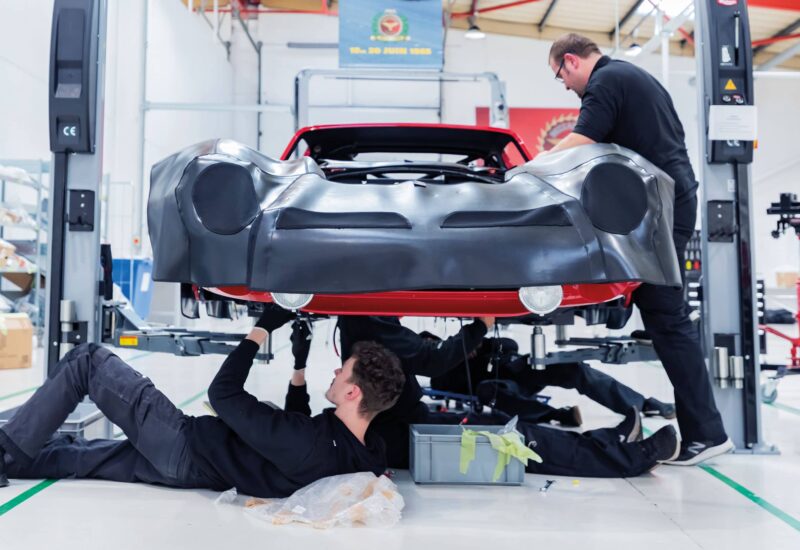
RML is a broad church, from its humble racing roots to continuation cars and high-end electronics
Jonathan Bushell
On a tour of RML’s three units, we pause for photos on the SWB ‘line’ (they’re hand-built, as you’d expect). But there’s more. Through another door another remarkable sight awaits us: a string of Bizzarrini recreations going through their finishing touches. “The Bizzarrini brand was acquired about five years ago by the Alroumi Group that acquired a stake in Aston Martin in 2005,” explains Michael. “We have a long history with Aston as a business, but Ray even more so as a person.”
“Yeah, when I left school I was an apprentice at Astons,” says Dad. “I used to build them on the chassis line, then I moved into sales, distribution and PR. And that’s before we even get to the Nimrod Group C car, RML’s very first project, and the AMR1.”
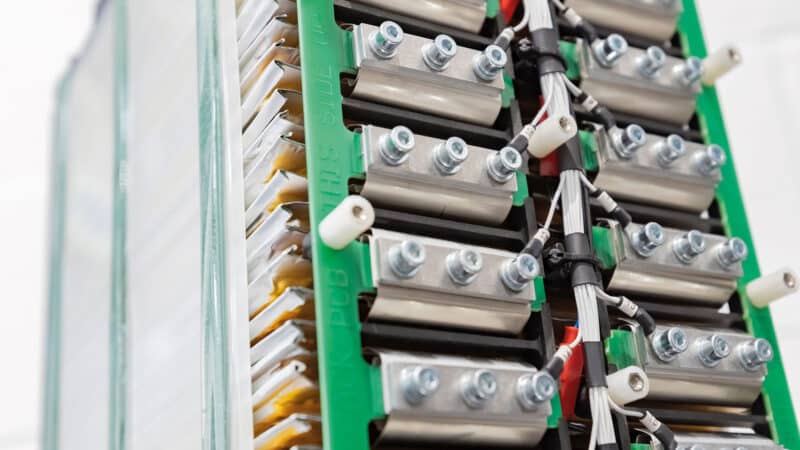
Jonathan Bushell
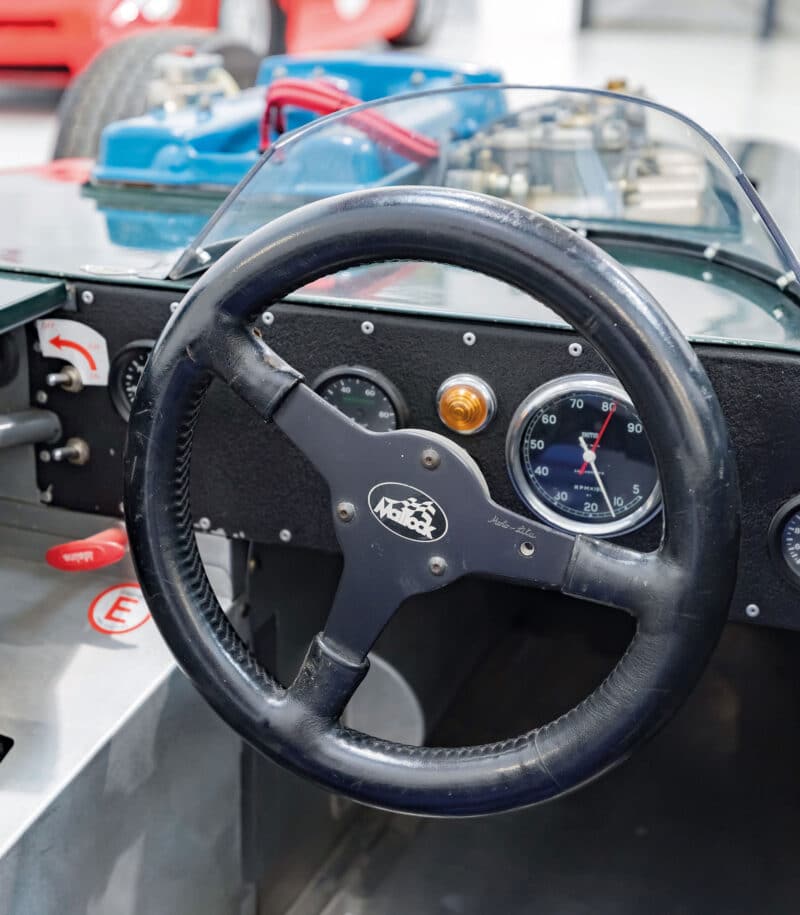
Jonathan Bushell
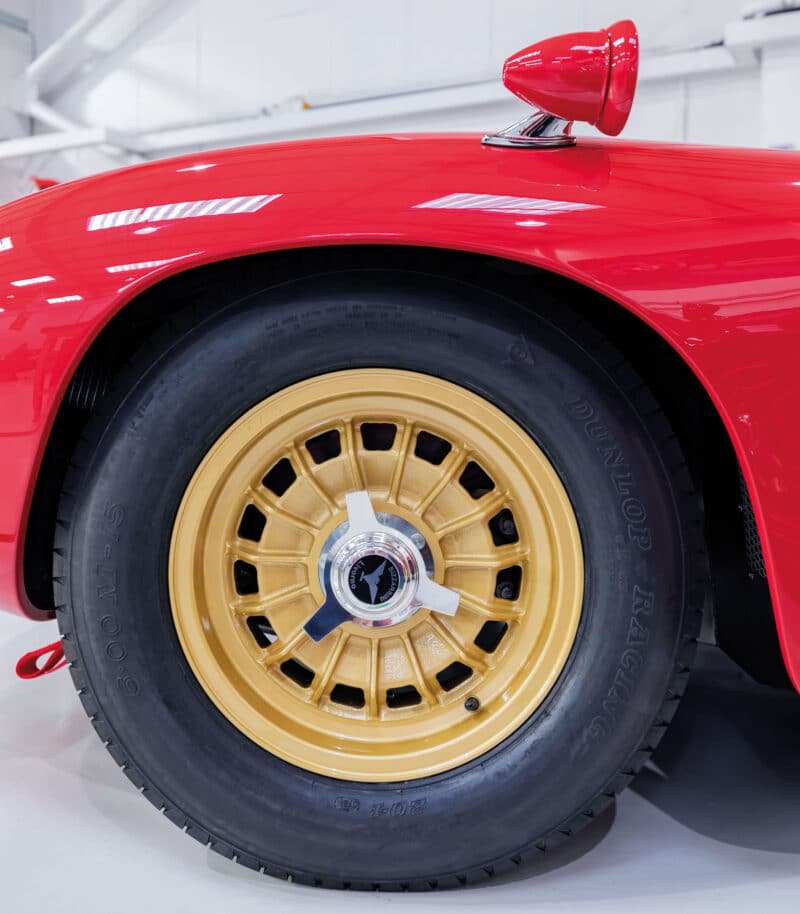
Mallock-steering-wheel
“When Alroumi wanted to relaunch Bizzarrini they asked us to deliver the whole programme, which is what has led to that fabulous build-line,” continues Michael. So it looks like a 5300 GT – but what are we actually staring at? “It’s as close aesthetically as possible to chassis 0222 when it won its class at Le Mans in 1965,” says Michael. “The team ploughed through hundreds of images, a load of data, and we also sourced more than 1000 original drawings. We scanned a couple of cars too, to digitally redesign the 5300 GT Corse as we believe Giotto [Bizzarrini] would have wanted it were he making it today. In 1964, they didn’t have the capability to perfectly get a bodyline sorted and that’s down to details like the door handles and the flap on the dash being how it only ran at Le Mans. There’s some really nice stories in the build process. We went through the supply chain as best we could to see what was available… there’s no point re-engineering or re-manufacturing if it’s already there. So we went to the people who made the dials in period. The back of the clocks and so on is modern but the front is exactly as it was when it ran at Le Mans. The steering boxes were from a Jaguar C-type. And again, we found the original manufacturers of those. There was an apprentice building them in 1965 who is now in his 70s and still manufacturing them. As far as links go, that’s a pretty good one.”
For old time’s sake and a pleasing nod to origins, the engine is still a Chevrolet but from recast blocks, a 5.3-litre V8 fed by four Weber twin carburettors. Yet free of any intention to replicate history, RML updates where it sees fit. The original car, for example, featured magnesium manifolds. Here, aluminium makes more sense. There’s also an FIA-approved bag tank for the fuel, an Appendix K homologated roll-cage and a carbon-fibre body in place of the original glassfibre. A total of 24 cars will be built – and some might well be allowed into historic racing. “The prototype completed 6500km of durability running, to make sure that everything works as it should,” says Michael, “and the first customer cars are out. It’s always good to see them being used.”
“We’d love to go back to Le Mans, but we’d have to be able to win it”
In another corner we find yet another bay of fresh cars, this time contemporary. Lotus’s attractive Emira GT4s are plugged together here, with RML also taking responsibility for customer service. “GT4 is a great marketplace, and something I know well from years racing with Aston Martin in the European GT4 Cup and then with KTM in British GT,” says Michael. “It’s good racing, the cars are competitive and it’s moved on a lot.”
The other big modern motor sport involvement is one that again RML doesn’t shout about. It remains at the heart of its old stomping ground, the BTCC, yet anyone outside of the paddock wouldn’t know it. The company is the series’ stock supplier for much of the chassis and suspension components, sub-frames and steering systems used by every car on the grid.
So what’s next for RML? “There is the next RML Short Wheelbase-type project, which is being evaluated at the moment,” says Michael. “Hopefully we’ll be showing it soon. It’s quite different, more performance focused.”
“The battery world is going to become an increasingly important part of RML’s business,” says Ray, who admits he only pops in these days to fettle his Formula Junior. “We’ve developed a new battery system which is a big step forward from anything that’s out there.”
“I would love us to go back to Le Mans,” Michael admits. “But it needs to be done properly. We’ve had lots of opportunities over the past few years to do race programmes. But I won’t water down the brand, it has to be capable of victory. If a manufacturer were to approach us about going back to Le Mans with a Hypercar, for example, that would be excellent. If that came together Dad might be proud of me, and not just the business!”
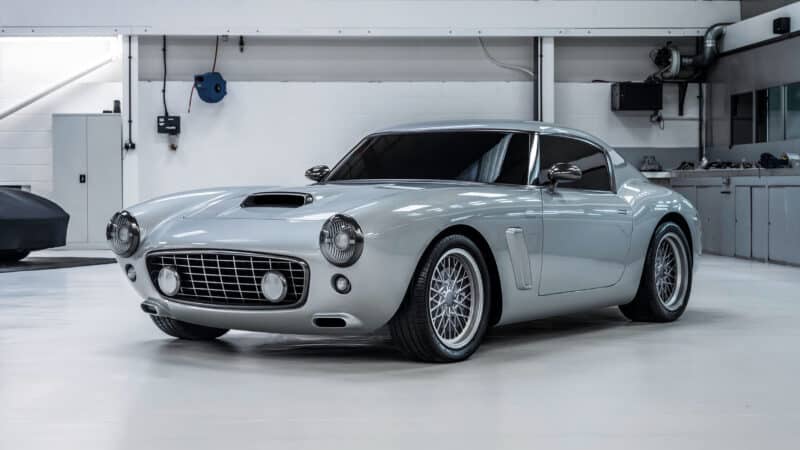
A hypercar or this? RML’s Short Wheelbase is a glorious creation, and not a Ferrari clone
Jonathan Bushell
